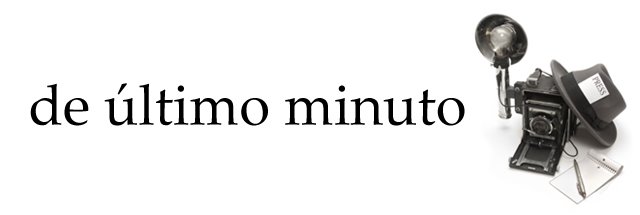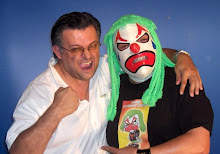
The following is a series of questions and answers prepared by Michael
Collins, command module pilot for Apollo 11. Collins issued the
following statement in lieu of media interviews:
These are questions I am most frequently asked, plus a few others I
have added. For more information, please consult my book, the 40th
anniversary edition of CARRYING THE FIRE, published by Farrar, Straus
& Giroux. All of the following sections in quotation marks are from
that reference.
Q. Circling the lonely moon by yourself, the loneliest person in the
universe, weren't you lonely?
A. No.
"Far from feeling lonely or abandoned, I feel very much a part of what
is taking place on the lunar surface. I know that I would be a liar
or a fool if I said that I have the best of the three Apollo 11
seats, but I can say with truth and equanimity that I am perfectly
satisfied with the one I have. This venture has been structured for
three men, and I consider my third to be as necessary as either of
the other two. I don't mean to deny a feeling of solitude. It is
there, reinforced by the fact that radio contact with the Earth
abruptly cuts off at the instant I disappear behind the moon, I am
alone now, truly alone, and absolutely isolated from any known life.
I am it. If a count were taken, the score would be three billion plus
two over on the other side of the moon, and one plus God knows what
on this side."
Q. Did you have the best seat on Apollo 11?
A. No.
"The cancellation of 014 also freed Borman-Stafford-Collins for
reassignment, and reassigned we were, but not as a unit. Tom Stafford
moved up a notch and acquired his own highly experienced crew, John
Young and Gene Cernan; they became McDivitt's back-up. Score one for
Tom. Borman and Collins got promoted to prime crew of the third
manned flight, picking up Bill Anders as our third member.
In the process, Collins also got 'promoted' from lunar module pilot to
command module pilot, and lost right then and there his first chance
to walk on the surface of the moon. The reason I had to move up was
that Deke at that time had a firm rule that the command module pilot
on all flights involving LM must have flown before in space, the idea
being that he didn't want any rookie in the CM by himself. Since Bill
and Anders had not flown, I was it. Slowly it sunk in. No LM for me,
no EVA, no fancy flying, no need to practice in helicopters anymore."
Q. Were you happy with the seat you had?
A. Yes, absolutely. It was an honor.
Q. Has the space program helped young people become interested in
careers in math and science? Don't you tell kids to opt for these
choices?
A. Yes and no. We definitely have a national problem in that kids seem
to be going for money rather than what they consider 'nerdy' careers.
Other countries are outstripping us in the quality and quantity of
math and science grads, and this can only hurt in the long run. But a
liberal arts education, particularly English, is a good entry point
no matter what the later specialization. I usually talk up English.

Q. Turning to your flight, what is your strongest memory of Apollo 11?
A. Looking back at Earth from a great distance.
"I really believe that if the political leaders of the world could see
their planet from a distance of 100,000 miles their outlook could be
fundamentally changed. That all-important border would be invisible,
that noisy argument silenced. The tiny globe would continue to turn,
serenely ignoring its subdivisions, presenting a unified fa?ade that
would cry out for unified understanding, for homogeneous treatment.
The earth must become as it appears: blue and white, not capitalist
or Communist; blue and white, not rich or poor; blue and white, not
envious or envied."
Small, shiny, serene, blue and white, FRAGILE.
Q. That was 40 years ago. Would it look the same today?
A. Yes, from the moon, but appearances can be deceiving. It's
certainly not serene, but definitely fragile, and growing more so.
When we flew to the moon, our population was 3 billion; today it has
more than doubled and is headed for 8 billion, the experts say. I do
not think this growth is sustainable or healthy. The loss of habitat,
the trashing of oceans, the accumulation of waste products - this is
no way to treat a planet.
Q. You are starting to sound a little grumpy. Are you grumpy?
A. At age 78, yes, in many ways. Some things about current society
irritate me, such as the adulation of celebrities and the inflation
of heroism.
Q. But aren't you both?
A. Not me. Neither.
Heroes abound, and should be revered as such, but don't count
astronauts among them. We work very hard; we did our jobs to near
perfection, but that was what we had hired on to do. In no way did we
meet the criterion of the Congressional Medal of Honor: 'above and
beyond the call of duty.'
Celebrities? What nonsense, what an empty concept for a person to be,
as my friend the great historian Daniel Boorstin put it, "known for
his well-known-ness." How many live-ins, how many trips to rehab,
maybe--wow--you could even get arrested and then you would really be
noticed. Don't get me started.
Q. So, if I wanted to sum you up, I should say "grumpy?"
A. No, no, lucky! Usually, you find yourself either too young or too
old to do what you really want, but consider: Neil Armstrong was born
in 1930, Buzz Aldrin 1930, and Mike Collins 1930. We came along at
exactly the right time. We survived hazardous careers and we were
successful in them. But in my own case at least, it was 10 percent
shrewd planning and 90 percent blind luck. Put LUCKY on my tombstone.
Q. Okay, but getting back to the space program. What's next?
A. I hope Mars. It was my favorite planet as a kid and still is. As
celestial bodies go, the moon is not a particularly interesting
place, but Mars is. It is the closest thing to a sister planet that
we have found so far. I worry that at NASA's creeping pace, with the
emphasis on returning to the moon, Mars may be receding into the
distance. That's about all I have to say.
Q. I understand you have become a recluse.
A. I'm not sure that's the word. I think of the Brown Recluse, the
deadliest of spiders, and I have a suntan, so perhaps. Anyway, it's
true I've never enjoyed the spotlight, don't know why, maybe it ties
in with the celebrity thing.
Q. So, how do you spend your time?
A. Running, biking, swimming, fishing, painting, cooking, reading,
worrying about the stock market, searching for a really good bottle
of cabernet under ten dollars. Moderately busy.
Q. No TV?
A. A few nature programs, and the Washington Redskins, that's about
it.
Q. Do you feel you've gotten enough recognition for your
accomplishments?
A. Lordy, yes, Oodles and oodles.
Q. Oodles?? But don't you have any keen insights?
A. Oh yeah, a whole bunch, but I'm saving them for the 50th.













